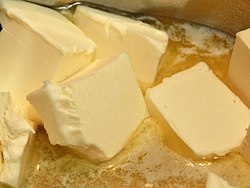


A butter churn is a device used to convert cream into butter, a process known as churning. This is done through a mechanical process, frequently via a pole inserted through the lid of the churn, or via a crank used to turn a rotating device inside the churn.




